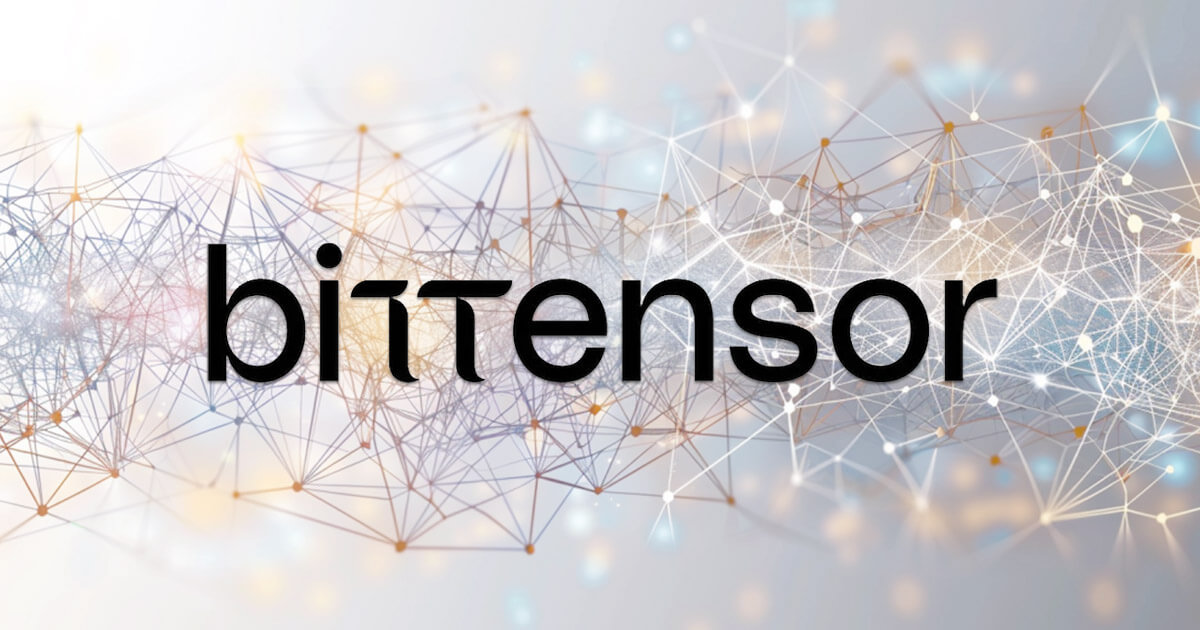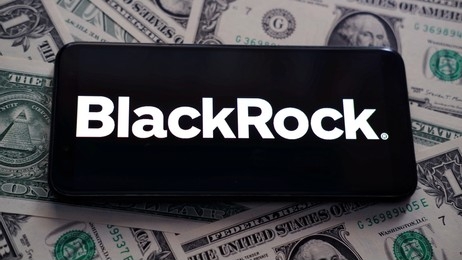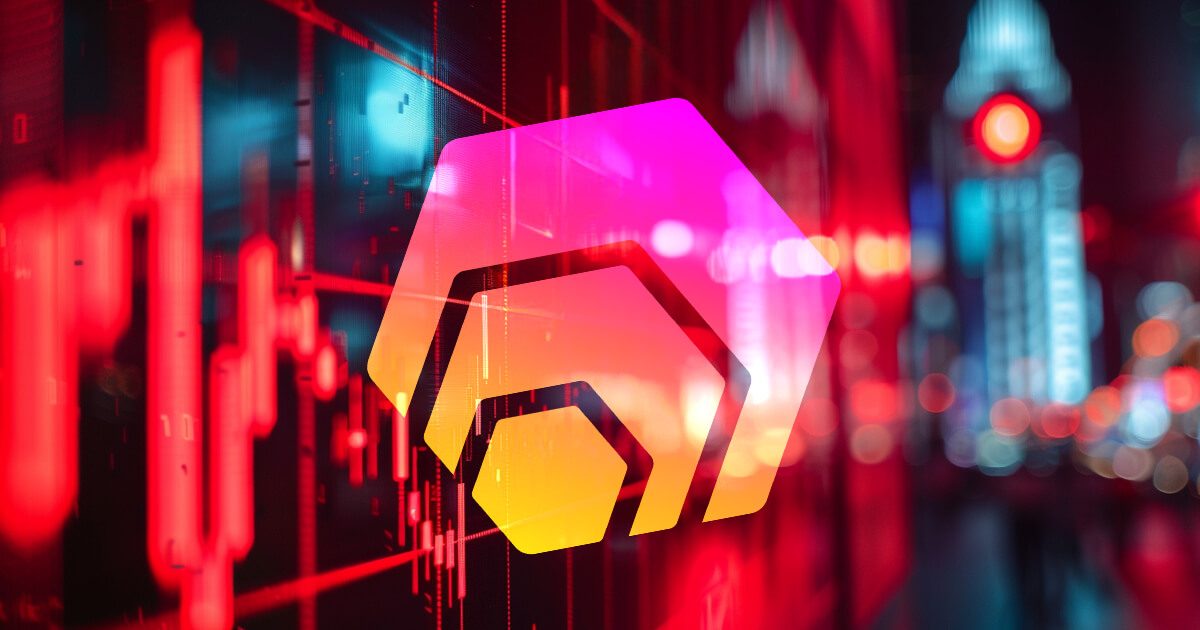Latest News
How AI and crypto are shaping the future of finance | MATIC News


Over the last three years, the crypto space has undergone massive upheavals. Alongside the boosting from stimulus packages in 2021, venture capital (VC) firms had invested $33 billion in crypto and blockchain startups.
The following year, the Federal Reserve triggered a domino of crypto bankruptcies with its interest rate hiking cycle, starting from the Terra (LUNA) crash and culminating in the FTX Ponzi scheme collapse.
The promise of DeFi lost its luster, not helped by over $3 billion lost in DeFi hacks during 2023. The ongoing Bitcoin bull run shows the lack of altcoin confidence as the so-called Altcoin Season is yet to manifest.
In June 2023, BlackRock’s head of strategic partnerships, Joseph Chalom, noted that DeFi’s institutional adoption is “many, many, many years away”. However, there is a case to be made that the emerging AI narrative can fuse with blockchain technology and its applications.
Taking in lessons from the previous cycle, what would that AI-crypto landscape look like?
Laying the AI Foundation with Crypto Composability
Looking back, it is safe to say that “DeFi” was subsumed by companies on top of tokenized layers, such as Celsius Network or BlockFi, rendering DeFi into CeFi. These companies successfully drove crypto adoption as such, only to end up sullying the very word “crypto”.
A renewed DeFi v2 should then focus on a superior user experience that doesn’t spark the demand for centralized companies to make it so. Most importantly, DeFi security must be fortified. The most promising solution in that direction is the zero-knowledge Ethereum Virtual Machine – zkEVM.
By abstracting chain transactions via zero-knowledge proofs (ZKPs), zkEVM increases network throughput and reduces gas costs. On top of that, zkEVM simplifies the user experience by facilitating alternative token payments for gas fees. In other words, zkEVM-like solutions pave the road to scalability needed for AI applications.
AI applications inherently involve high volumes of data, making it a potential bottleneck for blockchain networks. With this obstacle ahead, Polygon zkEVM makes it possible to generate AI artwork via the Midjourney image generator. In this process, the results could be tokenized as NFTs with low fees.
Building further on smart contracts of other kinds, the crypto space has laid the groundwork for AI with composability and permissionless access. Combined, this creates an autonomous and efficient infrastructure for financial markets. As every piece of market action can be disassembled into smart contracts, composability brings innovation across three composability layers:
- Morphological – components communicating between DeFi protocols, creating new meta-features.
- Atomic – ability for each smart contract to function independently or in conjunction with other protocols’ smart contracts.
- Syntactic – ability for protocols to communicate based on standardized protocols.
In practice, this translates to Lego DeFi bricks. For instance, Compound (COMP) allows users to supply liquidity into smart contract pools. This is one of DeFi’s revolutionary pillars as users no longer require someone’s permission to either loan or borrow. With smart contracts acting as liquidity pools, borrowers can tap into them by providing collateral.
Liquidity providers gain cTokens in return as interest. If the supplied token is USDC, the yielding one will be cUSDC. However these tokens can be integrated across the DeFi board into all protocols compatible with the ERC-20 standard.
In other words, composability creates opportunities for the multiplicity of yields, so that no smart contract is left idle. The problem is, how to efficiently handle this rise in complexity? This is where AI comes into play.
Amplifying Efficiency with AI
When thinking of artificial intelligence (AI), the main feature that comes to mind is superhuman processing. Financial markets have long ago become too complex for human minds to handle. Instead, humans have come to rely on predictive algorithms, automation and personalization.
In TradFi, this typically translates to robo advisors prompting users on their needs and risk tolerances. A robo advisor would then generate a profile to manage the user’s portfolio. In the blockchain composability arena, such AI algorithms would gain much greater flexibility to siphon yields.
By reading the market conditions on the fly as they access transparent smart contracts, AI agents have the potential to reduce market inefficiencies, reduce human error, and increase market coordination. The latter already exists in the form of automated market makers (AMMs) that deliver asset price discovery.
By analyzing order flows, liquidity and volatility in real-time, AI agents are ideally suited to optimize liquidity supply and even prevent DeFi flash loan exploits by coordinating between DeFi platforms and limiting transaction sizes.
Inevitably, as AI agents increase market efficiency through real-time market monitoring and machine learning, new prediction markets could emerge as liquidity deepens. The job of humans would then be to set bots to arbitrate against other bots.
At $42.5 billion across 2,500 equity rounds in 2023, AI investments have already outpaced the crypto peak of 2021. But which AI-crypto projects showcase the trend?
Spotlight on AI-Crypto Innovators
Since the launch of ChatGPT by OpenAI in November 2022, AI has been an attention grabber. The attention previously reserved for memecoins became diverted into AI advancements in reasoning, art generation, coding and most recently, text-to-video generation via Sora.
Across these fields of human interest, they all rely on the scaling of data centers. Unlike crypto tokens, which are smart contracts, AI tokens are the base blocks of text that the AI agent disassembles into relationship units. Depending on the attunement of each AI model, these tokens represent contextual windows for the relationships between concepts.
For each user prompt, it is challenging to allow maximum processing capacity. When the AI model breaks the text into tokens, the output relies on the token size. In turn, the token size determines the quality of the generated content, whatever it may be.
Obviously, the larger the token size, the larger the potential for an AI model to consider the greater number of concepts when generating content. Given such inherent limitations, AI tokens naturally fit blockchain tech.
Just as Web3 gaming tokenizes in-game assets for decentralized ownership, tradeable currency and reward incentives, the same can be done with AI. Case in point, Fetch.AI (FET) is an open-access protocol to connect Autonomous Economic Agents, via the Open Economic Framework to the Fetch Smart Ledger.
The FET token aims to monetize network transactions, pay for AI model deployment, reward network participants and pay for other services. And just as people connect with DeFi services via wallets, they can connect with Fetch.AI’s agentverse with a Fetch Wallet to take advantage of deployed AI protocols.
For instance, one of the many AI agents currently in beta agentverse is PDF Summarization Agent.
As a prospective pathway to democratizing AI agent access and deployment, FET token has gained 300% value since the beginning of the year. According to Market Research Future, AI agents market is forecasted to grow to $110.42 billion by 2032 from $6.03 billion 2023. This represents a compound annual growth rate (CAGR) of 43.80%.
Ultimately, we are likely to see an ecosystem of AI agents interacting with DeFi protocols and other services that would benefit from automating real-time decisions. This may expand to AI agents aiding self-driving EVs or even helping execute delicate surgeries and patient care. Pediatric surgeon Dr. Danielle Walsh at the University of Kentucky College of Medicine in Lexington said:
“A patient who wakes up at 1:00 in the morning 2 days after a surgical operation can contact the chatbot to ask, ‘I’m having this symptom, is this normal?’”
In medical diagnostics, Massachusetts-based Lantheus Holdings (LNTH) had already deployed its PYLARIFY AI imaging agent for early prostate cancer detection. With AI-crypto projects like Fetch.AI, many such services could be tokenized to full extent.
The Road Ahead: Challenges and Opportunities
Ahead of AI integration, blockchain platforms face the same problem – institutional adoption. Do smaller protocols have a chance to penetrate the mainstream, or is this reserved for institutions?
DeFi may have paved the way for tokenized financial markets, but big players are likelier to instill public confidence.
For instance, the Canton Network, which is supported by Big Bank and Big Tech, may supplant smaller DeFi fish. Eventually, the convenience of same-day bank transfers could be seamlessly integrated into blockchain networks. This is especially pertinent given that Microsoft is powering the Canton Network with Azure cloud while developing AI products.
At the same time, plenty of users would prefer to stay within open-access ecosystems, riding the value appreciation of AI-crypto tokens. Moreover, crypto protocols don’t have to be directly geared toward AI agent deployment. Case in point, The Graph (GRT) could be used for AI apps as a blockchain data indexing service.
Based on this speculation, this “Google of Blockchain” has gained a 103% boost year-to-date. One of the most prospective crypto projects aiding AI could be Injective Protocol (INJ). As it “injects” AI algorithms into aforementioned DeFi market actions, Injective aims to simplify and automate complex DeFi operations.
At the base layer of the AI-crypto intersection could be Allora Network, using its zero-knowledge machine learning (zkML) and federated learning to build AI apps for augmented DeFi experience.

If the rollout of these open apps is successful, institutional networks such as Canton would have diminished appeal. This dynamic will largely depend on regulatory agencies, which are yet to materialize rules even for the crypto space.
Conclusion
AI is poised to make data more intelligible, actionable and pertinent to a specific user. On the other hand, blockchain technology formalized and decentralized the logic of human action into self-executing smart contracts.
When the two spheres meet, we get AI agents with a renewed purpose. A new generation of tokenized robo-advisors that take full advantage of DeFi composability. And as AI agents explore new possibilities, new markets will emerge.
From predictive analysis to injecting liquidity into on-chain markets, AI agents are ready to craft a hyper-financialized future where, starting from Bitcoin itself, humans will encounter plenty of building blocks to capitalize on.
Mentioned in this article
Latest News
Crypto VC investment ‘continued rebound’ in Q2 with $3.2 billion invested – Galaxy | MATIC News


Venture capital investments in crypto continued to rebound in the second quarter, with a total $3.2 billion invested during the period — up 28% compared to $2.5 billion in the previous quarter, according to Galaxy Digital latest research report.
The report also identified a 94% quarterly surge in median pre-money valuation, which rose to $37 million from $19 million in the first quarter.
Galaxy noted the second quarter’s median pre-money valuation is the highest since the fourth quarter of 2021 and represents an almost all-time high. It attributed the surge to a more competitive market, giving companies greater negotiation leverage in deals.
Meanwhile, the second quarter median deal size grew to $3.2 million from $3 million, up 7% after remaining largely steady for five quarters. Deal count fell to 577 in the second quarter, down from 603 in the first quarter but up from less than 400 in the fourth quarter of 2023.
According to the report:
“Despite a lack of available investment capital compared to previous peaks, the resurgence of the crypto market… is leading to significant competition and [FOMO] among investors.”
The report highlighted a positive shift in crypto venture capital sentiment, buoyed by a nearly 50% year-to-date rise in Bitcoin and Ethereum prices. If the trend continues, 2024 will have the third-highest investment capital and deal count numbers after the bull markets of 2021 and 2022.
However, the report also noted that despite Bitcoin experiencing a significant rise since January 2023, venture capital activity has not kept pace, trading well below the levels seen when the flagship crypto last traded above $60,000 in 2021 and 2022.
The divergence is attributed to several factors, including crypto-native catalysts like Bitcoin ETFs and emerging areas such as restaking and Bitcoin Layer 2 solutions. Additionally, pressures from crypto startup bankruptcies, regulatory challenges, and macroeconomic headwinds, particularly interest rates, have collectively contributed to the breakdown.
Other data and trends
Specific project categories led fundraising — including Web3, which brought in $758 million or 24% of all capital. Infrastructure brought in over $450 million (15%), trading and exchanges brought in under $400 million (12%), and Layer 1 brought in under $400 million (12%).
Bitcoin Layer 2 networks continued to see significant investments of $94.6 million, up 174% on a quarterly basis. Galaxy said “investor excitement remains high” around the possibility of composable blockspace attracting DeFi and NFT projects to Bitcoin.
US companies dominated VC investment, attracting 53% of all capital and 40% of deals. Galaxy said US dominance exists despite regulatory change that could cause companies to leave the country and warned policymakers to be aware of their impact.
Early-stage firms received about 78% of capital, while late-stage companies received 20% of all capital. Galaxy said that larger general VC firms have left the sector or scaled down their activity, reducing the ability of later-stage startups to raise money.
Mentioned in this article
Latest News
Bittensor proposes burning 10% supply to stabilize TAO following $8 million exploit | MATIC News


OpenTensor Foundation (OTF) has proposed burning 10% of the Bitttensor (TAO) supply to stabilize the token’s price in response to a recent exploit that led to the loss of $8 million worth of the tokens.
The decentralized AI network has put forward a vote for users to decide on the burn. Active voters participating in the proposal will be rewarded with compensatory DAO rewards at a later date.
The exploit, which occurred on July 2, saw a Bittensor user lose 32,000 TAO tokens due to a leaked private key. The incident caused an immediate 15% drop in TAO’s price, hitting a six-month low of $227. The price has since rebounded slightly to $240.
Attack timeline
The attack timeline reveals that the incident began on July 2 at 7:06 P.M. UTC when funds started being transferred out of wallets.
OTF detected the abnormal transfer volume and initiated a war room by 7:25 P.M. UTC, and by 7:41 P.M. UTC, the team had neutralized the attack by placing validators behind a firewall and activating safe mode to prevent nodes from connecting to the chain.
During this period, the network was configured to only produce blocks, halting all transactions to prevent further losses and allowing time for a thorough investigation.
The root cause of the attack was traced back to a malicious package in the PyPi Package Manager version 6.12.2, which compromised user security. The package, posing as a legitimate Bittensor package, contained code designed to steal unencrypted coldkey details.
When users downloaded this package and decrypted their coldkeys, the decrypted bytecode was sent to a remote server controlled by the attacker.
The incident prompted an immediate response from the OTF team, which prioritized the security breach over regular updates and maintenance. The disruption has been a significant test for the network, highlighting both its vulnerabilities and the resilience of its infrastructure.
Aftermath
Despite the severity of the attack, some validators, such as RoundTable 21, confirmed that their delegators’ funds remained secure, emphasizing that the exploit did not impact all users uniformly.
However, the decision to halt the chain has led to a debate within the community about its implications for Bittensor’s claim of decentralization. Critics argue that the ability to pause the chain contradicts the principles of a decentralized AI network, while supporters believe it was necessary to protect users’ assets.
OTF plans to gradually resume normal operations of the Bittensor blockchain, ensuring a safe and responsible approach. Regular progress updates will be provided to the community.
As a precaution, users who suspect their wallets were compromised are advised to create new wallets and transfer their funds once the blockchain resumes normal operation. Additionally, upgrading to the latest version of Bittensor is strongly recommended.
Moving forward, Bittensor will implement enhanced package verification processes, increase the frequency of security audits, adopt best practices in public security policies, and improve monitoring and logging of package uploads and downloads.
The proposed token burn and ongoing security enhancements aim to restore confidence in the TAO ecosystem. The outcome of the vote will play a crucial role in stabilizing and securing the network, with the community eagerly awaiting further updates from the developers.
Mentioned in this article
Latest News
Europe’s largest Bitcoin miner Northern Data to launch IPO in the US | MATIC News


Europe’s largest Bitcoin miner, Northern Data AG, has announced plans for a substantial initial public offering (IPO) in the US at a valuation between $10 billion and $16 billion.
The IPO, which will be held on the Nasdaq stock exchange, is scheduled for the first half of 2025 and may also include selling a minority stake to investors prior to the public listing.
Following the IPO announcement, Northern Data’s shares on the XETRA stock exchange surged by over 5%, reaching €25. This positive market reaction indicates strong investor confidence in the company’s future prospects. The firm first considered an IPO in 2021 but decided against it at the time.
The upcoming offering will highlight two of Northern Data’s key business units: Taiga, which handles the company’s cloud computing activities, and Ardent, which manages its data centers. Both units are crucial to Northern Data’s strategy to capitalize on the rapidly expanding AI sector.
The crypto industry continues to face regulatory challenges. Previous attempts by digital asset firms to go public, including Circle, encountered difficulties due to regulatory scrutiny. However, Northern Data’s focus on AI and cloud computing may help it navigate these challenges more effectively.
AI pivot
Originally founded as Northern Bitcoin AG, Northern Data has grown into a significant player in the Bitcoin mining industry. In recent years, the company has diversified its operations to include artificial intelligence (AI) and cloud computing, responding to the decreasing profitability of Bitcoin mining and the growing opportunities in these fields.
In November 2023, Northern Data secured $610 million in debt financing from Tether. The investment is intended to strengthen Northern Data’s AI and cloud computing operations.
The financing followed a strategic partnership between the two companies announced in September 2023. The partnership aimed to focus on AI, peer-to-peer communications, and data storage solutions.
Northern Data’s pivot towards AI and cloud computing reflects a broader industry trend. As the profitability of Bitcoin mining declines, many companies, including Core Scientific and Hut 8 Corp, are exploring new revenue streams.
Committed to Bitcoin mining
While diversifying its business, Northern Data remains committed to Bitcoin mining and plans to continue expanding its footprint in the industry.
Peak Mining, the company’s US-based Bitcoin mining unit, is a significant part of its operations, with nearly 700 megawatts of high-performance computing data centers. In 2023, Peak Mining mined 2,298 BTC, generating over $64 million in revenue despite an 18% year-over-year decrease in production.
Northern Data’s presence in the US has been growing steadily. In May, the company acquired its second 300-megawatt mining site, further solidifying its position in the American market. The expansion highlights Northern Data’s long-term commitment to Bitcoin mining, even as it explores new technological frontiers.
Mentioned in this article
-

 Hot Projects4 months ago
Hot Projects4 months agoBitcoin Blasts Past $70,000 to Register New All-Time High | MATIC News
-

 Latest News4 months ago
Latest News4 months agoCourt upholds SEC’s unregistered securities claims against Gemini, Genesis’ Earn program | MATIC News
-

 Latest News2 months ago
Latest News2 months agoSix Coinbase customers claim the exchange is violating securities laws in new lawsuit | MATIC News
-
Hot Projects2 months ago
Bitcoin Will Be Set For New ATHs If It Breaks This Resistance: Analyst | MATIC News
-

 Hot Projects3 months ago
Hot Projects3 months agoBitcoin ETF Inflows Could Eclipse $1 Trillion, Predicts Bitwise CIO | MATIC News
-

 Hot Projects3 months ago
Hot Projects3 months agoOndo Finance Joins BlackRock Tokenized Fund As Inflows Surpass $160M | MATIC News
-

 Latest News4 months ago
Latest News4 months agoOver $1 billion wiped off HEX’s valuation following Richard Heart’s disparaging remarks | MATIC News
-

 Latest News2 months ago
Latest News2 months agoNew Hampshire representative proposes Bitcoin ETF investment to address state financial liabilities | MATIC News


